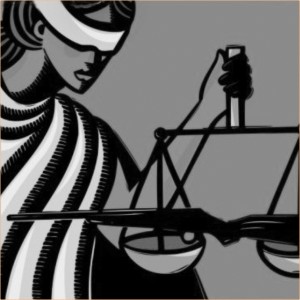|
||||||
Education in a competitive world -- Dr S.M.A. Faiz Higher education deficits in a drift -- Abdul Mannan Education for All-Beyond business as usual -- Rasheda K. Choudhury Islamic education heritage -- Dr A.M. Choudhury Economic diplomacy: Awaiting thrust -- Muhammad Zamir A wake-up call -- S. M. Rashed Ahmed Chowdhury New opportunities: New Challenges -- Syed Muazzem Ali Foreign relations: Taking a direction -- Ashfaqur Rahman Indo-Bangla ties: Old shadow, new vista -- C M Shafi Sami Towards a kinder, gentler peacekeeping -- Tazreena Sajjad Independence of the Higher Judiciary -- Asif Nazrul Problems of delay and backlog cases -- Dr. M. Shah Alam Juggling freedom and responsibility -- Shahid Alam Tourism in Bangladesh -- G. M. Quader MP The industrial policy dilemma -- Zahid Hussain 'Consumer redress' and 'empty pocket blues' -- Tureen Afroz How assertive has the Election Commission been? -- Manzoor Hasan Does the Election Commission exercise all its powers? --Mohammad Abu Hena Adivasi's tears and grief -- Sareeta Haider Architecture: How Green is Green? -- Ar. Zebun Nasreen Ahmed Chittagong Hill Tracts: Development without peace -- Naeem Mohaiemen Revisiting the BDR saga -- Brig Gen Shahedul Anam Khan ndc, psc, (Retd) Sexual harassment and our morals police -- Hana Shams Ahmed Garnering efforts is a sign of growing up -- Dr. Nizamuddin Ahmed Rationalising the Intelligence services -- Muhammad Nurul Huda
|
||||||
Problems of delay and backlog cases Dr. M. Shah Alam
The problems of delay in disposal and resultant backlog of cases at all tiers of the judiciary, and the prohibitive costs of litigation for the parties, which have been identified as major road-blocks to access to justice, rule of law and smooth socio-economic life, continue to plague our society and polity. In fact, delay in the litigation process in our judiciary has reached such a point as to pose a formidable threat to protection and promotion of human rights. In a society of class differentiation, the lengthy process of litigations, which is adversarial and confrontational in nature, puts the economically weaker party at disadvantageous position. Our procedural laws which contain elements and scopes for delay have become by misuse by the party/parties procedurally hostile to the marginalised sections of the people, defeating the goals of social justice. A brief acquaintance with some of the major causes of delay and backlog of cases would shed light on the nature of the problem warranting not only undertaking of concrete measures for their eradication, but also making systemic adjustments and changes including changing our mind-sets. They are: Party-controlled litigation process with predominating procedural rights of the parties which provides wide maneuvering power to the lawyers, and presupposes lesser initiative and relative passivity of the judges. Slow process of service of the summons which can be further slowed down by the intentions of the parties concerned, indicating a poor state of court administration. Frequent adjournments of the trial caused by the insistence of the parties, and the reluctance of the judges to restrict these adjournments, such reluctance partially being explained by their heavy case-load. Lack of strict adherence to time-frames or time-limits prescribed by laws (e.g. Section 339C of CrPC; Order VIII Rule 1, Order XVIII Rule19 of CPC; Section 20 of Nari O Shishu Nirjatan Domon Ain, 2000; provisions on speedy trial court and tribunal) for the proceedings and disposal of suits at different levels, and skipping them by various exception and extra-ordinary clauses. The problem is accentuated by the controversy of directory or mandatory character of the time-limit provisions, and Supreme Court judgements (i.e. Fazlul Haque vs. Tohed Ali 47 DLR 326 and Lal Mamud vs. Seraj Miah 45 DLR 638) on the directory nature of most of such provisions. Frequent resort to interim injunctive relief, and commonly made interlocutory orders and appeals which fracture the case into many parts and effectively stay the trial, leaving the hearing of the main contentions and issues to uncertain time-frame. Scope for frequent amendments of the plaints and written statements at any stage of the trial. Absence of lawyer-client accountability giving the lawyer monopoly to conduct the case the way s/he considers best suited to her/his own interest, even to linger and delay the process. Little scope for client-to-client interaction which hinders potentiality for alternative dispute resolution and intensifies the confrontational nature of the proceedings. Failure of the parties to present the witnesses sometimes genuine, and sometimes deliberate. Rotation and transfer of the judges, often meaning that the same judge who heard testimony may not decide the dispute, taking away thereby much of his incentive to push forward the proceedings to judgement and seriously impeding the process of continuous trial; the new judge may have to repeat some of the procedural requirements already fulfilled. Inadequate number of judges with the impact that (i) most of the courts are overloaded, (ii) the same court has to exercise jurisdiction over matters of special interest like family, land, environment, etc. (iii) there is less scope to create more specialised courts as demanded by the need of specialisation, and (iv) it is still not easy to create courts at sub-ordinate judiciary with exclusive civil or criminal jurisdiction. Absence of a separate and permanent professional body of investigation. Inadequate facilities and expertise at district levels to submit forensic evidence. Absence of sufficient legal provisions for victims and witnesses' protection, which seriously impede smooth process of litigation. Our party/lawyer dominated ADR unfriendly litigation process.
A careful investigation of the major causes of delay and backlog of cases reveals that the administration of justice in Bangladesh is caught in whirlwind of procedural hazards. This combined with poor case management and weak court administration, inefficiency and corruption lead to a vicious circle that goes on to multiply the crisis. This may lead any conscious and concerned person to look for systemic defects in the common law tradition of our legal and judicial system, and try to find some panacea in the civil law system in the Continental Europe. It is believed a comparative study and research on the characteristics, merits and demerits of the two systems can help shed light on the peculiarities of our problems, and persuade us to take from the civil law tradition, as it is well-known for its procedural simplicity, tidiness, expeditiousness and discipline. Many countries of common law origin including UK and USA have taken and benefited from civil law practice and experience. Unfortunately there has been no research in our country on comparative advantages and disadvantages of the two systems. Caused by immobile and imbecile colonial mindset and steered by vested interests, we are almost mechanically and blindly holding on to common law tradition, which even its motherland compromised with. Models of civil procedure in common law countries, which are adversarial in nature, are characterised by domination, control and confrontation of the parties, meaning more activeness and initiative of the lawyers vis-à-vis relative passiveness and lesser initiative on the part of the judges. Parties' lawyers, adversaries as they are, fight to 'infinity' taking all the advantages of time and procedural freedoms provided by procedural laws and rules, while the judge plays the role of an umpire occasionally intervening and finally announcing the decision more on the performance of the lawyers as players than on pursuing to seek and find the truth. The common law puts more emphasis on procedural fairness and justice, providing almost unlimited procedural freedom to the parties to argue more, bring in more facts and evidence and to take more time to prove their cases. The fundamental thesis is that truth is to emerge from contentious display of arguments, facts and evidences of the opposing parties in an open court, where traditionally the parties enjoy more privileges under the trumpeted due process to drag the proceedings based on procedural rights to prove or to disprove facts. Richer and stronger parties in the process gain understandable advantage over poorer parties; the truth often becomes victim of money-power and lingering and delayed procedure. Procedural justice prevails over substantive justice.
On the other hand, procedure in the civil law system is inquisitorial in nature. This primarily means, while the parties are the major actors in bringing the facts and evidences to the court as in common law, unlike common law the judge in a civil law system plays no less important role in admitting facts and evidences. The judge in civil law is more active, initiative-taking, having the power to gather facts and evidences on his own , if need be. He can even call the parties separately to know facts and testify evidences. He exercises more control over the lawyers, limiting their time to argue and submit facts and evidences, and restricting their occasions to seek adjournments of the proceedings and amendments of plaints and written statements to stop any deliberate use of dilatory tactics. For civil law courts, more important is coming to concrete decision or truth by active participation of the judge than the truth coming as a result intense fighting of the parties based on their procedural rights, where economically richer parties have more opportunities to win. It is obvious from the characteristics of the common law that it puts predominant emphasis on oral submission and arguments than submitting written documents, while civil law encourages more written statements and information, thereby narrowing the scope for endless oral arguments and counter arguments. Moreover, the civil law judge pre-reads documents to prepare himself before the trial, and endeavours to gather prior information on facts and evidences in various ways, so the hearsay evidence is not excluded. In civil law proceedings, a judge is, therefore, a more informed judge, and does not leave everything to the parties fighting in the court. Goals of case management, i.e. dissecting the life span of a case and road-mapping its final disposal, which is considered one of the most effective modern techniques for expediting civil proceedings and which presupposes participation of the judge as well as the lawyers are more easily achievable in civil law system. In fact, the concepts of case management and a managerial judge have emerged from the practice of civil law which envisages more control of the judge over the case for stage by stage movement. Recently adopted Civil Procedure Rules (CPR) in England has substantially taken from the inquisitorial civil law procedure in the Continental Europe. This has richly paid off. In fact, the CPR has given English people (i) a more informed judge, (ii) a judge with more power over civil proceedings and (iii) more opportunities for resort to alternative means of dispute resolution. Commenting on these three advantages, Professor Emeritus of Comparative Law in the University of Cambridge J. A. Jolowicz wrote (ICLQ vol. 52, April 2003, p. 287): In the first group we have virtual abolition, for civil cases, of the rule against hearsay evidence. This is important because it allows the use in evidence of a variety of documents whose disclosure does not have to await the trial. Next, we have the greatly enlarged use of written experts' reports, we have the exchange of written witness statements, and we have skeleton arguments. ……[these documents are] available to the parties and the court during the pre-trial stage…..The CPR stress the need for the court to be well informed from the inception of the action, and make appropriate provision to that end…..time should be allocated to enable the judge to 'pre-read the papers'. It was essentially this development that led to the replacement of the judge who remains largely ignorant of the case he is to try until the trial begins, by the judge who knows in advance, and is expected to know, a great deal about all aspects of the case. The second group consists of the various rules that provide for a substantial increase in the judge's powers of control of the case at the expense of those of the parties. Under the CPR the judge can even go so far as to dispose summarily of a case, not only on application but also on his own initiative, if he considers that the claim or defence 'has no real prospect of success.' The judge has also the power to control evidence, which he may do by giving directions on the issues on which he requires evidence, on the nature of the evidence that he requires to determine those issues and on the way in which the evidence is to be placed before the court. In the third group we have the increased and strengthened devices for persuading the parties to resolve their disputes outside the courts…..Alternative Dispute Resolution is encouraged to the extent that a stay can be ordered to enable the parties to resort to ADR. A principal object of the pre-action Protocols and, indeed, of case management generally is to assist and encourage settlement at the earliest possible stage. All this is in keeping with…..view that disputes should, wherever possible, be resolved without litigation. We grossly lag behind. If delay and backlog of cases are what the policy makers and informed observers see as a major obstacle to access to justice, its time that intensive comparative study and research of the adversarial and inquisitorial approaches be made and appropriate lessons derived to amend and mend our common law tradition. Provisions for ADR in CPC, Money Loan Court Act 2004, existing family laws, and the Village Court Act 2006 and the Legal Aid Act 2000 make very fertile grounds for extensive research as to why these laws failed to deliver service in expected measure, and what need to be done that they are successful, as it has been the case in many other countries. These are the laws which involve the interests of millions of people, who are not sufficiently aware of the merits of these laws and why they are failing. Taking proper care of these laws including their necessary amendments and due application backed by credible institutional arrangements, can hugely contribute towards easing the pressure on judiciary and resolve the problems of delay and backlog. The failure or limited success cannot be attributed only to inadequacy of the provisions of the laws, which of course may be one of the reasons to be resolved by amendments. Attitudes and vested interests of the major actors, judges, lawyers and parties become very relevant. Awareness of the people about the ins and outs of the above laws is more important. Awareness, motivation and dedication, parties' interests as well as safeguard of professional interests of the judges, lawyers and mediators need to be taken into consideration for successful resolution of the disputes outside the courts. Researchers need to appreciate the fact that in principle all the stakeholders and general people desire success of the dispute resolution moves under various ADR and quasi-judicial measures. However, they may have conflicting interests, and these may not be resolved in equal measure by the laws. How their interests collide with the provisions of law must be found out and resolved. Logical analysis and experience from other jurisdictions convince that the apprehended conflicts would not exist in the long run. It is also to be kept in mind that for the success of any such programme, institutional mechanism would need to be designed accordingly. For example, without creating a strong professional group of mediators with institutional training and affiliation, any move for successful mediation is fated to failure. Besides lawyers, any other person prescribed by law to be qualified as such, can be trained, examined and certified as a mediator. Their professional interest including fees and other privileges would need to be legally protected. For the underperformance of the village court, the awareness and motivation of the people seems to be the missing link. In a country like Bangladesh which can boast of a very ancient and rich tradition of rural mediation and conciliation, insufficient use of village courts which contain the fundamental elements of mediation is difficult to understand. The causes must be found out, and appropriate remedial measures adopted. The competence, composition, jurisdiction and power of the village court, and its relationship with formal judiciary need to be reviewed. Legal aid in Bangladesh is critical for access of the people to justice. Although we have a legal aid law and a national network of legal aid committees, its benefits hardly reach the target groups. It is an unfortunate irony that whatever funds are available for legal aid to be disbursed through the committees often remain unutilised. This is explained by lack of coordination amongst the chairmen and members of the committees, poor organisation of works, lack of central monitoring, lack of awareness amongst the target groups and lack of motivation amongst the lawyers and judges. Of course, paucity of funds remains a big problem. Legal as well as administrative measures need to be strengthened to make the legal aid programme successful; programmes and funds would also need to be used to promote more frequent and effective resort to ADR.
|
||||||
© thedailystar.net, 2010. All Rights Reserved |



